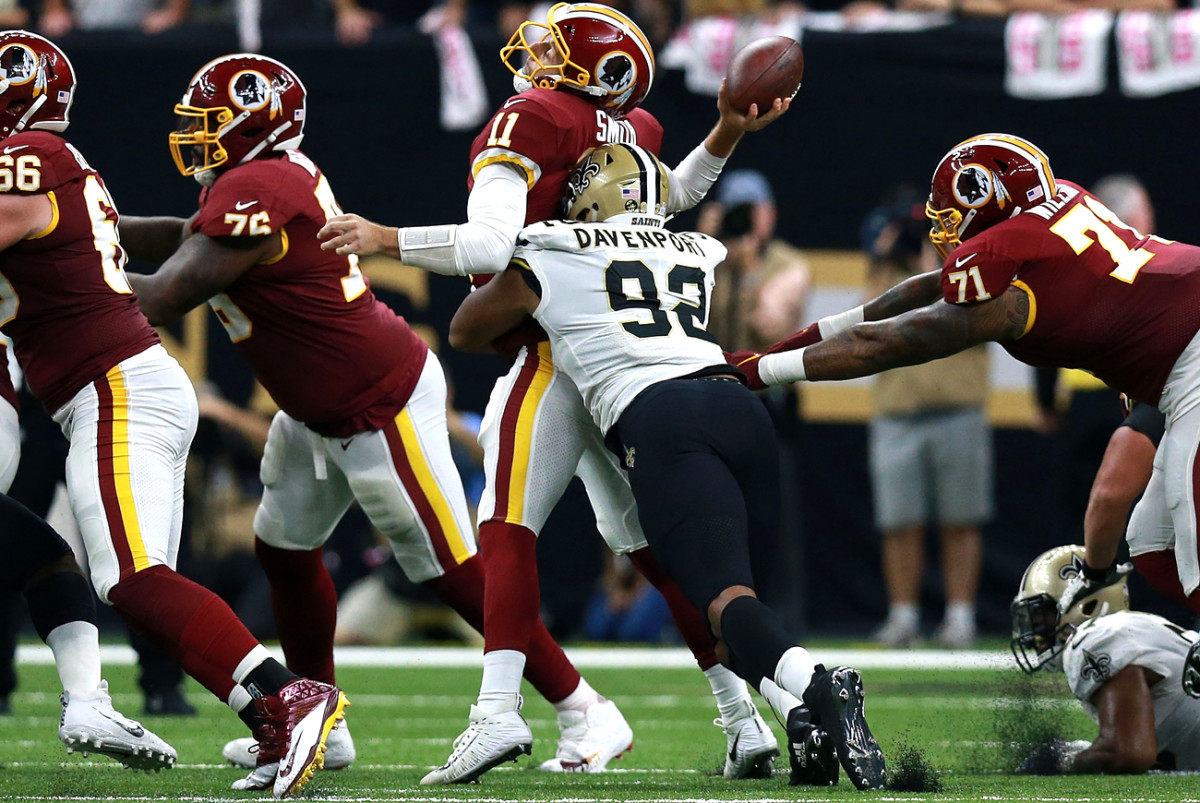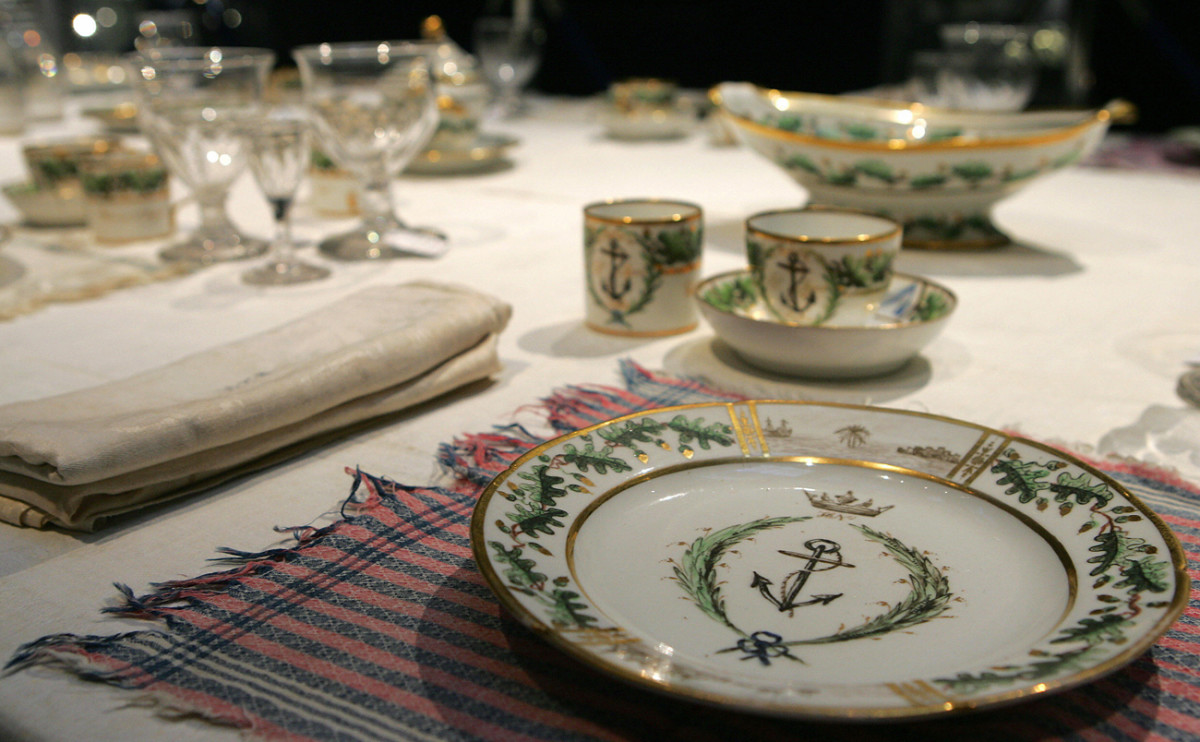Watch Out, NFC: The Saints Are Building a Defense

Don’t let cornerback Eli Apple’s recent price tag—a fourth- and a seventh-round pick—fool you: The Saints are getting a quality starting corner. Maybe not quite to the quality the Giants forecast when drafting the Ohio State Buckeye 10th overall in 2016, but certainly of enough quality to accelerate the ascension of this Saints defense. Apple can play press-man or zone. When he’s comfortable he has a natural poise to his matchup technique, especially from off-coverage, where he can mirror receivers. He’s also an effective tackler. If, as the Saints hope, a change of scenery ignites the personal maturation that Apple ostensibly never achieved in New York, New Orleans will have a defense that might not be of Super Bowl-caliber in and of itself, but certainly is playing opposite a Drew Brees-led offense.
Recall that in Apple’s impressive rookie season he played across from Janoris Jenkins, who that year performed at an All-Pro level, helping lead the Giants to an NFC East title. Now Apple is opposite an even better player in Marshon Lattimore—one of the few NFL corners who truly can travel with opposing No. 1 receivers. (The only place Lattimore can’t go is to the slot if it’s zone coverage.)
Lattimore rarely needs safety help, but Saints defensive coordinator Dennis Allen, who values variety in how his safeties are deployed, schemes just enough of it to keep offenses from getting a comfortable bead on his coverages. Having two quality cover artists outsides removes any lids on Allen’s schematic options.
Saints Trade for Eli Apple to Help Maximize Drew Brees’s Final Years
Allen last season discovered something he probably wishes he’d learned sometime during 2012-14, when he was the head coach in Oakland: Simplicity can be better. A diverse scheme does not need to be a complicated scheme. Where Allen once disguised a litany of hybrid looks, taxing his players mentally, he now employs more traditional coverages and textures the scheme by changing up those simpler looks from snap to snap. This allows his men to play fast. Discovering this identity was a big part of the Saints’ playoff run last year, and on film this 2018 defense appears headed down a similar path. It’s performing much better now than it did in September.
Apple and the rest of the secondary form Part A of New Orleans’s expected defensive improvement. Part B is the pass rush. First-round rookie defensive end Marcus Davenport, at this point, is mostly just a big load of talent, capable of occasionally beating pass-blockers with raw power. As the 22-year-old Texas-San Antonio product continues to work with respected D-line coach Ryan Nielsen and adjusts to facing top-flight left tackles, he should develop (at least the semblance of) a repertoire of passing rushing moves.

Inside, the Saints have tinkered with lineups, trying to find a nickel defensive tackle to complement 2016 first-rounder Sheldon Rankins, who remains one of the game’s better “dirty work” pass rushers. Cameron Jordan got snaps here early in the year but proved better at defensive end, where, despite drawing regular double-teams and protection slides, he still looks borderline unstoppable. Last year’s right defensive end, Alex Okafor, has also gotten a look inside. If Okafor doesn’t stick, the Saints will keep tinkering, hoping the problem can solve itself if Trey Hendrickson regains the form and potential he showed as a rookie last year. Overall, this D-line is a talented work in progress. As it gels and develops, we’ll start seeing more of the stunts and twists that last year’s D-line executed so well down the stretch. When that happens, this defense could be strong enough to make New Orleans the Rams’ biggest NFC challenger.
Episodes 1 and 2 available now: An exclusive narrative podcast series from SI, re-examining the murder of Titans great Steve McNair. Subscribe on iTunes, or wherever you download your podcasts. And visit the podcast homepage for additional materials and updates.
TWEET ELABORATION
Tyreek Hill is great, but tap the breaks on "best WR in football" talk. Julio, AB, Thielen, Hopkins, and Beckham lead that discussion.
— Andy Benoit (@Andy_Benoit) October 18, 2018
Hill is great (obviously), but he might not even be Receiver No. 1 on his own team. Some defenses, judging by their game plans, put tight end Travis Kelce ahead of Hill. But Kelce, 29, is close to a finished product; Hill, only seven games into his second season as a true starting wide receiver, is just getting started. He’s much more than just a burner. Hill has the important ability to throttle down, which is critical for how a speedy receiver gains separation. He’s also a fantastic ball-tracker, and he’s a reliable pass-catcher, which some coaches marvel at considering that Hill’s hands, by NFL receiver standards, are not very big.
THE KEY TO GREAT DEFENSE
There remains a great hullabaloo about all the offensive production this season. Last week I floated a theory about what defenses can do to counter. That theory, in short: Disguise themselves and attack. From a broader view, it’s apparent that pass rushing is more important than ever. With offenses being so proficient from spread formations, a defense’s best hope is to disrupt the quarterback’s timing. The stats backs this up. The defenses with the fewest points allowed—Baltimore, Dallas, Tennessee, the Los Angeles Rams, etc.—have disruptive pass rushes. The defenses with the most points allowed—Tampa Bay, Atlanta, San Francisco, Oakland, etc.—do not.
THE NINERS
They still have one of football’s best-coached offenses, and in many categories their production has actually been better under C.J. Beathard than it was under Jimmy Garoppolo. Kyle Shanahan’s unique two-back passing game is still generating opportunities downfield. The problem has been turnovers. In their six losses, the Niners have had a league-worst 18, 10 of which have involved Beathard. Factor in a disappointing defense and you have a lost year in San Francisco
NONFOOTBALL ITEM OF THE WEEK

Last week I wrote about my perturbance at the wording my dad once used to refer to a large group dinner he attended that involved legendary actor Jimmy Stewart. I posed this question: What’s the group size (or table size) cutoff for being able to say you had dinner with someone? Or better yet, what are the criteria that constitute “having dinner with” someone?
Some responses:
A LESSON FROM (MOVIE) HISTORY
Geez, Mr. District Attorney, you are a stickler! Your father spoke the truth—he had dinner with Jimmy Stewart. And when pressed, he does not seem to have lied about the details. After that, you were free to make you own judgment about the engagement, which in your case, seems needlessly harsh. Remember the scene in Master and Commander, when Captain Aubrey recalled for his shipmates the time he dined with Admiral Nelson, and that the great Admiral even spoke to him: “I say, Aubrey, can I trouble you for the salt?” A memory of proximity can be just as rewarding as a memory of intimacy.
—Jamie Malanowski
A LECTURE
I’m curious to know how old you were when your dad offended your sensibilities with his little boast. That’s because having been a teenager, and raised two of my own, and endured the company of many more, it seems there is a hallmark of this stage of human development. Zeroing in on adult frailty like a heat-seeking missile is very much like most teenagers.
Or was I the only one?
Eventually we mature out of it, mostly. We become more tolerant of each other’s quirks and flaws. Sometimes our admiration and love grows deeper, despite these things. There are even large souls who learn this tolerance not just in retrospect, but in their daily interactions with people.
Let your dad have his dinner with Jimmy Stewart. You are not describing a man who was swaggering around, crowing to the world about their close personal friendship. Besides, you may get other letters that convincingly argue he was totally in bounds.
—Duke, San Diego
A SHOT
Apropos your father having dinner with Jimmy Stewart, I can top that.
In 1959 I went to a Giants game ... with Willie Mays. Larry Bird and I saw the Celtics. And then Tom Brady ... David Ortiz ... Ronaldo... Wait, I went to the opening of the 1996 Olympics with Muhammad Ali! We were there! GOAT, baby!
—Joel Abramovitz, Leland, Ill.
A FAIR ANALOGY
Great topic: No, your dad didn’t have dinner with Stewart. He was at a dinner, and Stewart was also there. People do the same thing with acquaintances—“I’ve known him 30 years.” Actually, no, you knew him 30 years ago but haven’t talked to him since.
—Chris Delleceser
Question or comment?Dinner recommendation? Email us at talkback@themmqb.com.
